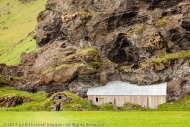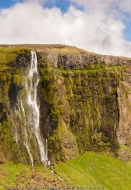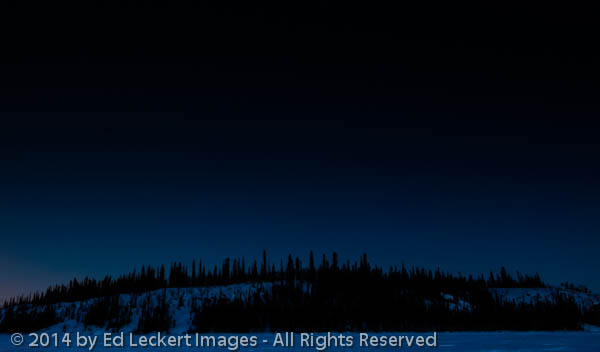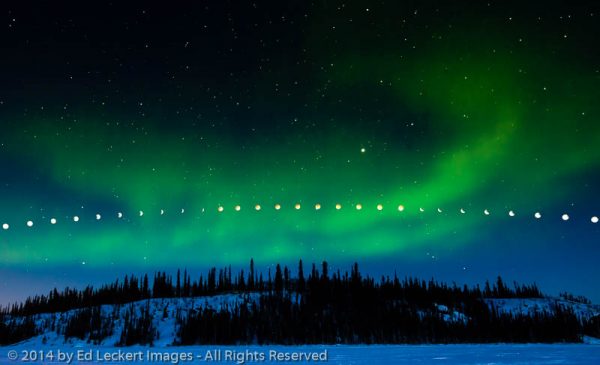


No, we’re not going to talk about umbras and penumbras. There are plenty of good resources about eclipses out there, like the NASA Eclipse Web Site. Nope, we’re going to talk about standing out on a frozen lake in -20°C temperatures to get the composite image featured in this post.
I don’t usually do composite images, or multiple exposures combined into a single image, but when trying to show a progression of events such as a solar or lunar eclipse, the technique can be quite effective. So when I discovered that a lunar eclipse was taking place while I was going to be in Yellowknife looking for the Aurora Borealis, I knew I’d be out there somewhere freezing my toes off for the entire night. It’s just something I have to do.
So, what’s the process? How do I previsualize what I want the final image to look like and plan for something like this?
Assuming you’re in the right part of the world to see the eclipse, and that you have any necessary survival gear such as, in this case, -40°C capable insulated boots among other things, the next thing to do is find a place to be for the event. I always try to include an earthbound object in my sky images to make them more interesting, but because I know I need to combine images anyway, there’s no reason I need to be in the same place when I shoot the foreground as when I capture the sequence of lunar images. Sometimes I shoot an interesting foreground with a wide-angle lens, then switch to a telephoto to get more detail and make the sun or moon appear larger and more interesting. (Of course there’s detail in the sun – they’re called sun spots!) Then I use Adobe Photoshop to layer the images on top of one another, trying to estimate where each frame of the sun or moon should be relative to the foreground to look somewhat realistic. It’s a bit tedious trying to line everything up, and not all that realistic looking, to be honest.
But this time I wanted to try something different. For this shoot, I would try to capture the foreground and all of the moon images from the same spot, with the same lens, without moving the camera. However, my concern was that if I used a lens wide enough to follow the moon all the way across the sky from eclipse start to finish, the moon would be too small to see in the final image. But I wanted to try it.
So this added some challenges. I needed to find a place to shoot an interesting foreground where the moon would also be visible and well positioned relative to the foreground for the entire eclipse, and therefore I needed to know where the moon would be from start to finish. As you might imagine, there’s an app for that. I use an app on my Android phone called Sundroid that tells me where celestial objects are going to be in the sky at certain times. I simply set my location to Yellowknife and it told me the angle of the moon at eclipse start and finish, and also the azimuth, or angle above the horizon. So I got out my trusty compass, being sure to set the declination for Yellowknife (the angle between true and magnetic north), and I put myself in front of a nice little hill on frozen Prelude Lake so the moon would rise up one side of the hill and down the other. Next, I used the inclinometer on my compass to check the azimuth of the moon at various stages relative to the hill. I had to back away from the hill a bit as a result of this check. It would be really disappointing to get halfway through the eclipse and have the moon disappear behind the hill!

A snow-covered hill of evergreens will be the foreground for my lunar eclipse series, at Prelude Lake Territorial Park, Northwest Territories, Canada.
OK, so I know where I’m going to be all night. I took some sample shots, checked the exposure data on the LCD on the back of the camera, and plugged in what we call an intervalometer. This handy little device is what I use when I need to take multiple images at preset intervals. It’s useful for sequences like this and star trail images, or for time lapse sequences. It’s all the same to the timer.
Now the lake I’m standing on does have an ice road across it, but unfortunately, that ice road is directly in front of the camera, so I couldn’t put my car there. I decided to leave it back on solid ground and walk back to it from time to time to warm up. This event was going to last from 11 PM until 4 AM, with temperatures expected to drop to -20°C before it was over, so I thought a little exercise would help.
I could pretty much leave the camera alone, except to check on it to make sure it was still functioning. The manual says it only works down to 0°C, after all, and I was exceeding that by over 35°F! One thing I did have to do was increase the exposure during the “blood moon” phase, when the moon was eclipsed by the earth. Otherwise it would just go completely black, and that’s not very interesting. Then, of course, I’d have to gradually decrease the exposure on the other side as the moon came out of eclipse. But other than those two times, I could go back to the car and try to stay warm.
There was one slight problem with leaving the camera alone, and that was that it was pretty dark out there, and the lake was huge. I had to make sure I could find my camera again! So I left some unique footprints at the edge of the ice road where my tracks would lead back to the camera.
So what about the experience of being out there all alone at night? What’s that like being out on a frozen lake in an unfamiliar area from late dusk to early dawn? Of course the primary concern is keeping warm. It’s the nose and cheeks that are always a problem. But there is no wind, and it’s very, very quiet. Except for the ice you’re standing on. Every once in a while it makes a deep, cracking sound that makes you reconsider where you’re standing. And there are other noises, too. Or are there? You’re all bundled up, and your head is moving around inside your hood making noise, but you thought you heard something or someone. You turn around, but no one is out there on that huge lake. Usually.
One time you turn around and something is coming after you! What the heck is that thing? A racoon? It’s coming straight at me! What does it want? Snacks? Does it have rabies? It’s probably time to turn on the headlamp. Ah, that does it. He backs away from the headlamp. Turn it off, and here he comes again! We do this several times. Finally, he takes off toward the middle of the lake. Really? Why that way? Where is he going? (Later research suggested it may have been a muskrat. Don’t know for certain.)
And then there were the wolves. Every once in a while they’d get going, and you wondered if you were going to get surrounded by a pack of hungry wolves with only snowballs to fend them off. I later discovered that the campgrounds in the park have quite a few winter residents, and they probably all have at least one husky if not an entire dog sled team in residence. So that’s probably what I heard. But I didn’t know that at the time.
During totality, when the lake was the darkest and the wolves were howling, I couldn’t stop thinking about the movie Pitch Black. If you’ve never seen it, it’s about life on a planet with two suns that goes completely dark every 25 years – and some pretty horrible things happen. This is where your mind goes when you’re on a remote frozen lake by yourself in near darkness listening to wolves. Yep.
The aurora wasn’t very active that night, except for one moment when it stretched from one horizon to another, directly overhead. Then it reshaped itself, and it looked as if the hand of God was directly over me. There was the thumb, the fingers, the curve of the palm. It was quite surreal. But all of this was overhead, not to the south where the eclipse was taking place. Or so I thought. I had a surprise waiting for me when I got home and viewed the images taken during the total eclipse, where I had the exposure ramped up to capture the darkened moon. As you can see from the final image, there was quite a bit of activity going on over there – I just couldn’t see it.
Finally, the moon had finished doing its thing. It seems much brighter now than before the eclipse, like it’s angry about the interruption and it’s making up for lost time. After overshooting my tracks and wandering around looking for my camera for ten minutes, I finally gathered up my belongings and headed back toward the car. But wait! What are those lights near my car? It looks like someone is over there with a headlamp on, poking around my car. Great. I don’t need my headlamp with the full moon, so I’ll keep it off and try to get close enough to see what’s going on. I keep walking but the lights have disappeared. There they are! Then gone again. What is that? It can’t be a reflection in ice or animal eyes from the light of the moon – it’s in front of me, off to the left. I keep walking, and never do figure it out before I reach the car.
As I leave, I look toward the east, and the glow on the horizon signals the start of another day. I can’t wait to drive the 30km back to Yellowknife and get to bed. I’m going to sleep well for what’s left of tonight. Good thing my breakfast at the B&B will be left out for me. It could be quite a while before I get to it later that morning!

A lunar eclipse takes place above Prelude Lake while the Aurora Borealis puts on a show, in Prelude Lake Territorial Park, Northwest Territories, Canada. All images in this composite were taken on the night of the eclipse from the same camera position with the same lens and focal length. Only the exposure was adjusted during the night.

Great work and explanation of the process Ed, you’re one talented dude!
Thanks, Jonathan!
Very interesting story, Ed! And what an amazing result. You have so much patience (and really cool boots).
Thanks, Lorraine! I’ll have to wear those boots on the dance floor next time!
I like the self-imposed restrictions. Makes it seem more real somehow. I think the aurora was just a bonus to reward you for your self-discipline!
I remember trying to take pictures of a lunar eclipse many years ago. I was surprised how bright the fully-eclipsed moon really was. Even with bracketing my dimmest picture still was overwhelmed by a big fuzzy overexposed moon. This was back in the film days when there was no such thing as immediate feedback.
Yes, Dan, night photography was much more difficult in the film days because light levels at night can vary so widely and are difficult or impossible to measure with a light meter. You had to bracket over a wide range of settings, which of course was expensive to do.
I love that the curvature of the hilltop matches the arc of the moon. It’s details like that which separate the interesting images from the great ones.
Thanks, Michael! We’re lucky to have great tools to be able to calculate the position of celestial entities on the fly.